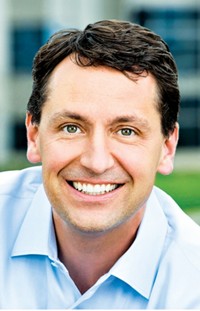Advertisement
Grab your lab coat. Let's get started
Welcome!
Welcome!
Create an account below to get 6 C&EN articles per month, receive newsletters and more - all free.
It seems this is your first time logging in online. Please enter the following information to continue.
As an ACS member you automatically get access to this site. All we need is few more details to create your reading experience.
Not you? Sign in with a different account.
Not you? Sign in with a different account.
ERROR 1
ERROR 1
ERROR 2
ERROR 2
ERROR 2
ERROR 2
ERROR 2
Password and Confirm password must match.
If you have an ACS member number, please enter it here so we can link this account to your membership. (optional)
ERROR 2
ACS values your privacy. By submitting your information, you are gaining access to C&EN and subscribing to our weekly newsletter. We use the information you provide to make your reading experience better, and we will never sell your data to third party members.
Pharmaceuticals
A Business Built on Fast Changes
Morphochem taps new CEO to reshape strategy as it flexes development muscle
by PATRICIA L. SHORT
November 22, 2004
| A version of this story appeared in
Volume 82, Issue 47

Launched in 1998, small-molecule drug discovery specialist Morphochem had in its early days an academic aura that seemed to hark back to its origins in 1996 in the department of organic chemistry at the Technical University of Munich.
But these days, the company is jettisoning that academic feeling under a new chief executive officer who is steering it in a briskly commercial direction.
With the completion of about half of an ongoing round of financing earlier this year, the company has intensified a strategy begun in 2002 of shifting its focus from early-stage technology development to projects involving selected in-house drugs that it can bring to market. Partnership deals, a step beyond a historical dependence on research licensing, also now feature increasingly in Morphochem's strategy.
This strategy was further kicked into gear in August when the company recruited its new CEO, Sijmen de Vries, from pharmaceuticals giant Novartis, where his last post was head of global business development for ophthalmics. Earlier, the Netherlands-born de Vries, who holds a medical doctor's degree from the University of Amsterdam, was with SmithKline Beecham.
In between SmithKline Beecham and Novartis, de Vries was the CEO of a start-up company, the Rademacher Group, spun off from University College London; the company used inositol chemistry to make small molecules useful in diabetes treatments. De Vries says that stint with a start-up gave him the "bug" for small businesses.
"Morphochem was a technology platform company," he observes, with expertise in multicomponent reactions--high-throughput reactions featuring multiple variables to maximize results. "Where was it to go from there? It never really developed commercially. Then about a year-and-a-half ago, its managers started strategic discussions as to where the company was going."
Morphochem, he says, "was at a crossroads. It had a strong chairman, lots of expertise in this multicomponent reaction chemistry, a solid technology foundation, and a well-filled pipeline in early stages of development. It had done excellent work on its platform and in how to discover, optimize, and select leads." But clearly, for the company to move forward, it needed more commercial focus. "That was why it was appropriate for a guy like me to take over," de Vries says.
With a new CEO and $18.5 million in financing in the bank, the company is now committed to moving its two most advanced products into Phase I clinical trials and obtaining the first human data for the products in 2005. Those products are MCM17, an orally available Factor Xa inhibitor, and oxaquin, a dual-action antibiotic that targets hospital-acquired infections resistant to current antibiotics. Morphochem plans to seek codevelopment or option partners for further clinical development.
In addition, the company will seek to partner other earlier stage products in its portfolio for preclinical and clinical development, including ones in oncology, infection, and diabetes.
THE DECISION to refocus was not an easy one, de Vries acknowledges. Among other consequences of the new strategy was a "significant downsizing" of the company at the end of last year, one that cut its staff in half. "We were overextended, so the company went on a very drastic diet." It now has slightly fewer than 50 employees in laboratories in Basel, Munich, and Princeton, N.J.
Lutz Weber, the company's former chief scientific officer, has been retained as a scientific adviser and consultant, de Vries says. "He is a real chemistry wizard, one of the 'owners' of the chemistry. But now, with the downsizing, we have a simplified structure with a very flat leadership team of seven people: three people in discovery, one in business development, one in finance, one for clinical and medical affairs, and one for drug supply."
According to de Vries, in the past nine months, the task for his company has been to capitalize on external collaborations and to develop leads against various targets for partners such as Novartis and Boehringer Ingleheim.
But as the company moves forward into development partnering, he points out, it must be flexible. "There is an interesting sector emerging--the matured biotechs and smaller specialty pharma companies--with the capacity to develop. They make a nice alternative to partnering with big pharma," he explains. "You have such companies in Europe, in the U.S., or in Japan
"Good partnering is essential for the future of this company," he insists, "for our good lead compounds, but also for a couple of our earlier stage projects." Such partnering, de Vries says, "would give a validation of our products and technology, and extend our reach."
However, he adds, "the ultimate validation will be sales from successfully addressing an unmet medical need. Patients benefiting from our novel therapies will provide the commercial returns for our long-term stakeholders."



Join the conversation
Contact the reporter
Submit a Letter to the Editor for publication
Engage with us on Twitter